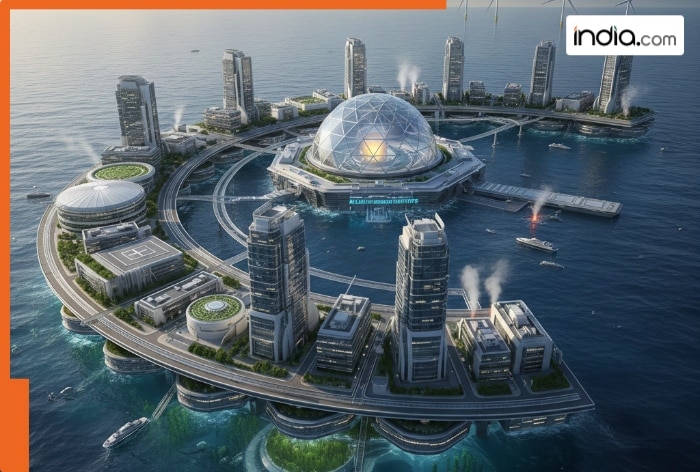China achieves what US, France, and Russia failed to, building floating artificial island capable of withstanding nuclear attack
It is the first island of its kind in the world.

New Delhi: China has achieved a major milestone in its military power and scientific advancement. China is building a floating artificial island designed to withstand a nuclear explosion. This 78,000-ton semi-submersible twin-hull platform is the world’s first mobile, self-sustaining artificial island. Capable of rapid ocean travel, this artificial island could prove to be a major asset for China. It is the first island of its kind in the world.
According to a report in the South China Morning Post, this new facility is as large as China’s newest Fujian aircraft carrier. It can accommodate 238 people for four months without resupply. The island is expected to be operational in 2028, and once in service, it will be able to project significant power in contested waters.
What’s Special?
The team led by Professor Yang Deqing of Shanghai Jiao Tong University (SJTU) explains that this deep-sea major scientific facility is designed for all-weather and long-term habitability. Its superstructure includes essential compartments that ensure emergency power, communications, and navigation control. This makes it crucial for nuclear blast protection.
According to SJTU, the facility is officially named the Deep-Sea All-Weather Resident Floating Research Facility. It is designated as a National Major Scientific Infrastructure Project under China’s 14th Five-Year Plan. This mobile island, known as a floating island in the deep sea, was built after a decade of research and planning.
Dimensions and width
According to the university’s design contract with the China State Shipbuilding Corporation in December 2024, the platform will be 138 meters long and 85 meters wide, with the main deck rising 45 meters above the waterline. Its twin-hull design enables it to operate in Sea State 7 (rough seas with waves 6-9 meters high). It can survive very powerful Category 17 typhoons.
What makes this platform revolutionary is its combination of mobility and permanence. Unlike fixed research stations or traditional ships limited by fuel and supplies, this floating island can travel at speeds of up to 15 knots.
What's Your Reaction?





















































